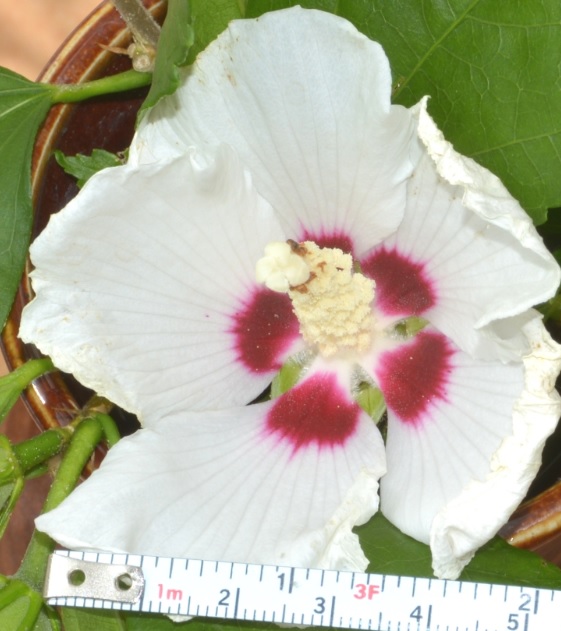The Malvaceae family is a botanical group belonging to the order Malvales, encompassing around 2440 species spread across approximately 244 genera. The Malvaceae family includes herbs, shrubs, and trees that are ecologically, ornamentally, and agriculturally significant.
General Description
The Malvaceae family consists of plants ranging from annual herbs to large trees. These plants are typically characterized by palmate leaves, which may have serrated or lobed margins, and can be either simple or compound. The flowers are usually large and showy, with five petals and a prominent stamen structure. Their reproductive structures are generally radially symmetrical (actinomorphic), though some genera exhibit zygomorphic (bilateral) symmetry.
Chemical Composition
The Malvaceae family contains a variety of bioactive compounds, including flavonoids, phenolic acids, tannins, saponins, mucilages, and alkaloids. Many of these substances have therapeutic properties, making plants from this family important in traditional medicine. Some genera, such as Hibiscus, contain organic acids like citric acid and malic acid, which are also used in cosmetics for their exfoliating and antioxidant properties.
Physical Properties
Malvaceae plants exhibit a wide range of physical forms, but common characteristics include plant tissues that contain mucilages, particularly in the leaves and flowers. These mucilages are water-soluble and are known for their soothing and hydrating properties. The flowers are typically large and colorful, adapted for pollination by insects such as bees and butterflies.
Production Process
The cultivation of plants in the Malvaceae family varies greatly depending on the genus and the intended use of the plant. For example, the cultivation of ornamental plants like Hibiscus rosa-sinensis is typically carried out in controlled environments with careful attention to temperature and humidity. For plants used in medicine or fiber production, such as Malva sylvestris, harvesting occurs when the plants reach maturity, with methods designed to minimize the degradation of active compounds.
Applications
Medical
Malvaceae plants have a long history of use in traditional medicine. For example, Malva sylvestris is used for its emollient and soothing properties, particularly for treating skin and mucosal inflammations. Other species of Hibiscus are known for their antioxidant and anti-inflammatory effects and are used to treat conditions like hypertension and digestive disorders.
Cosmetics
Malvaceae plants are widely used in the cosmetic industry for their hydrating and soothing properties. The mucilages found in the flowers and leaves are incorporated into formulations to treat dry skin, skin irritations, and inflammation. Hibiscus is also used to promote hair growth and improve skin health.
Food
Some Malvaceae plants, such as Hibiscus sabdariffa, are used to produce beverages like hibiscus tea, which is known for its antioxidant properties and refreshing taste. The petals of hibiscus are also used in certain cuisines to make jams, jellies, and sweets.
Environmental and Safety Considerations
As with many plants, Malvaceae species should be harvested and utilized sustainably to avoid the depletion of natural resources. The use of pesticides and intensive agricultural practices can harm local ecosystems. Regarding safety, Malvaceae plants are generally considered safe for external use, though some species (particularly those containing alkaloids) should be used with caution, especially in cases of hypersensitivity or allergic reactions.
INCI Functions
- Emollient: Soothes and hydrates the skin.
- Antioxidant: Protects against free radical damage.
- Anti-inflammatory: Reduces inflammation in the skin and mucous membranes.
In summary, the Malvaceae family is a diverse and versatile botanical group, with numerous applications in medicine, cosmetics, and food. Its ecological importance and potential for sustainability make it a subject of interest for scientific research and the development of new technologies.
![]() Malvaceae
Malvaceae 


